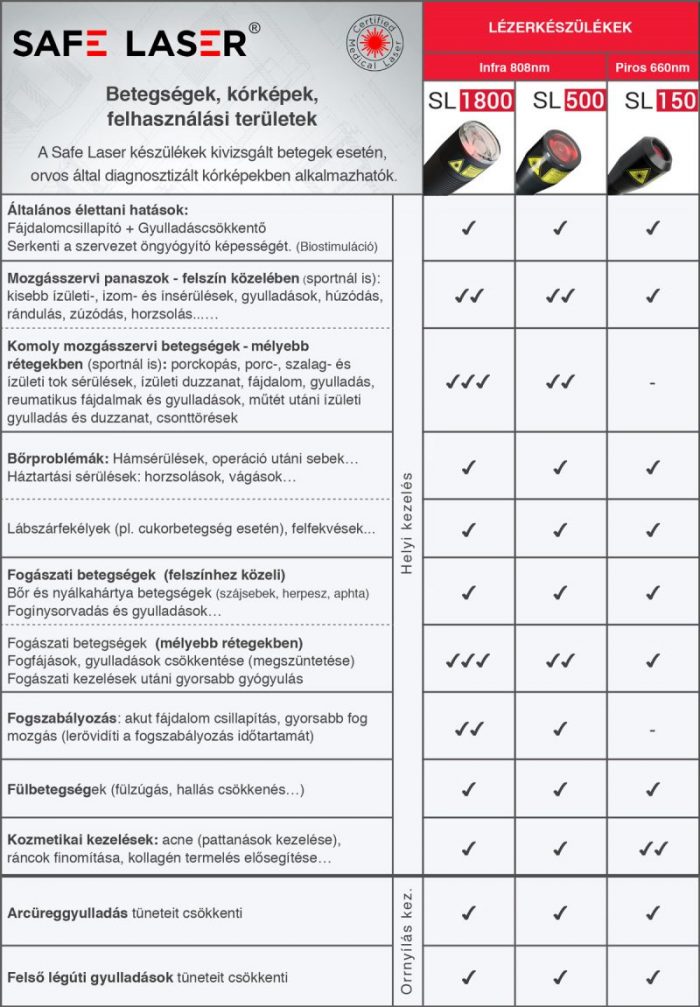Free Reasons To Selecting A Safe Laser Treatment
Free Reasons To Selecting A Safe Laser Treatment
Blog Article
What Do Safe Laser Low-Level Laser Therapy (Lllt) Which Is A Low-Level And Safe Laser, Aid In Healing Ulcerative Wounds?
Safe Laser Low Level Laser Therapy (LLLT) can be utilized to treat ulcerative wounds in a variety of ways. It stimulates collagen synthesis, the activity of fibroblasts and angiogenesis (formation of new blood vessels), all of which are crucial to heal wounds. This is a way to promote the faster healing of ulcerative injuries.
Reduction of inflammation- LLLT produces anti-inflammatory effects through the suppression of proinflammatory Cytokines. In ulcerative wounds in which inflammation may impede healing and exacerbate tissue damage, LLLT can help reduce inflammation and create a more healthy environment for healing.
Pain relief LLLT alters the perception of pain through the nerve conduction. It also reduces the release of pain mediators such as the substance P. In cases of ulcerative injuries that are frequently caused by pain and discomfort, LLLT may help relieve discomfort and improve the overall experience.
Enhanced Circulation – LLLT improves microcirculation, vasodilation and blood flow. Improved Blood Circulation -LLLT boosts blood flow to the site of injury through the delivery of oxygen and nutrients.
LLLT exhibits antimicrobial qualities which decrease the risk of infections in ulcerative sores. LLLT aids in bacterial elimination and reduces wound infections.
Reduced Scar Formation Reduction of Scar Formation LLLT can reduce scarring in ulcerative wounds through the stimulation of tissue remodeling and regeneration. Through stimulating collagen fiber production and encouraging collagen bundle alignment, LLLT helps produce stronger and better-organized scar tissue.
In general, low-level Laser therapy with Safe Laser helps to speed up recovery, reduced pain and improved wound outcomes. It is essential to consult with a professional regarding the best treatment for wounds. Read the best safe laser 1800 for more info including safe laser készülék, lágylézer kezelés árak, orvosi lézer készülékek, lágylézer vásárlás, mozgásszervi betegségek kezelése, laser lézer, lézer kezelés hatása, laser lézer, safe laser használata, orvosi lézer készülékek and more.
How Can Safe Laser Help In The Treatment Of Ear, Throat, And Nose Problems?
Secure Laser Low-Level Laser Therapy (LLLT), can help with a range of ENT (ear, nose, and throat) issues through a variety of mechanisms. Reducing inflammation- LLLT's anti-inflammatory properties can help reduce swelling in tissues around the ear as well as the nose. It can help with conditions such as sinusitis, tonsillitis and rhinitis where inflammation can lead to symptoms like nasal congestion, sore throat, and ear irritation.
Pain Relief LLLT alters the perception of pain through nerve conduction, and reducing the release of substances that cause pain, such as substance P. In ENT conditions, LLLT can help alleviate the pain that is associated with earache, sore throat or pressure on the sinus.
Enhanced Tissue Healing- LLLT stimulates cell metabolism and growth and accelerates healing and repair of tissues. LLLT may help to promote faster healing in ENT ailments, like otitis media (middle ear infections) or the pharyngitis.
Improved Blood Circulation LLLT promotes microcirculation by increasing vasodilation. This improves the flow of blood to the area affected. The increased flow of blood can aid in healing and reduce inflammation through increasing oxygen and nutrients.
Antimicrobial effects - LLLT has antimicrobial properties which can decrease the amount of bacterial or viral load within the nasal passages and throat. It can also help treat conditions like sinusitis or tonsillitis.
Relief from Allergic Symptoms – LLLT reduces inflammation of the sinuses and nasal passages and can help alleviate the symptoms of allergic rhinitis. This may result in less nasal congestion and sneezing.
Tinnitus Treatment- LLLT was investigated as a treatment option for tinnitus. Tinnitus causes ringing and buzzing sounds that can be heard in the ear. Although the precise mechanism behind the effects of LLLT are not fully understood, it may help to improve blood supply and lessen inflammation of the hearing system. This may lead to an improvement in the hearing loss.
Safe Laser's low-level laser therapy is non-invasive, drug-free and offers fast healing. Talk to an ENT doctor to confirm a diagnosis and treatment recommendation prior to the use of LLLT. Read the top rated safe laser bérlés for website tips including orvosi lézer készülékek, orvosi lágylézer, mozgásszervi problémák, lagylezer terapia, lágylézer készülék, lágylézer árak, safe laser vélemények, mozgásszervi betegségek kezelése, lágylézeres készülék, safe laser használata and more. 
How Long Does It Take For A Laser Device That Is Safe And Secure To Take Effect On Acute Injuries?
The number of sessions required to allow the Safe Laser device to take effect on acute conditions can vary depending on aspects like the seriousness of the issue as well as the person's reaction to treatment, and the specific procedure recommended by a health specialist. Low-level laser therapy may provide relief for many acute ailments, such as acute inflammation, recent injuries or sudden episodes. In some cases, individuals might notice less swelling, pain, and inflammation after one or two sessions of LLLT. For more lasting results However, it's recommended to schedule a series of LLLT treatment sessions spread out over a time.
The frequency and quantity of LLLT sessions needed for treating acute ailments may vary according to aspects like the severity of the symptoms, the particular condition treated, and even individual aspects like health and response to treatment. Healthcare professionals can tailor treatment strategies to suit the specific needs of each patient. This can include scheduling LLLT sessions several times a week for a specified time.
To get the most benefit from therapy for acute ailments It is essential to follow the prescribed treatment plan and to attend all scheduled LLLT treatments. Additionally, patients might see improvements in their condition over time as they continue treatment. If you have any concerns or doubts about the treatment plan, or the progress it has made consult your physician.